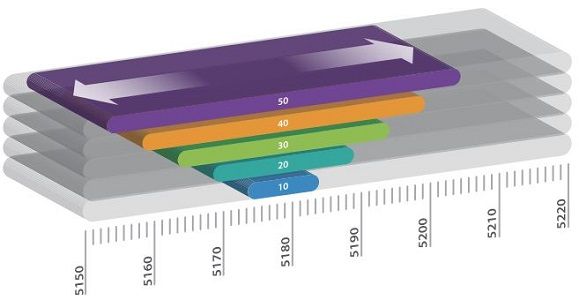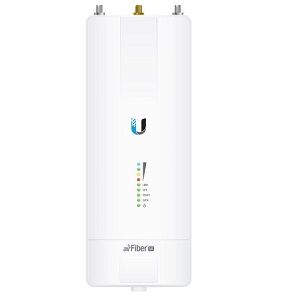Related Products
AirFiber 5XHD
AirFiber 5X
Ubiquiti Networks continues to disrupt the wireless broadband market with revolutionary technology at breakthrough pricing by introducing the airFiber® X, a modular airFiber radio system that serves a wide range of frequencies and is designed to be compatible with a variety of Ubiquiti® antennas. Building upon the proven design of the airFiber system, the airFiber X allows you to customize airFiber backhaul links or upgrade existing Rocket Point‑to‑Point (PtP) links.
Ultra-Low Latency with HDD Technology
The airFiber X is designed to provide the highest TDD throughput and lowest latency available using proprietary Hybrid Division Duplexing (HDD) technology.
Co-Location
With tower space at a premium, the importance of being able to co-locate equipment is becoming an essential attribute for modern wireless networks. The airFiber X is engineered to permit multiple radios to operate side by side, allowing maximum spectral efficiency.
GPS Synchronization
Precise GPS frame synchronization enables co-located airFiber X radios to transmit and receive data without interfering with each other, enabling better frequency reuse and increased network stability.
Clean Power Output
Using advanced digital signal processing, the innovative airFiber X radio design has an ultra-clean transmitter output, reducing broadband noise, facilitating co-location, and enabling higher-order modulations like 1024QAM for greater throughput.
5 GHz Full-Band Certification with DFS
The AF-5X covers the entire, license-free, 5 GHz spectrum and includes DFS approval. Anyone around the world can deploy and operate the AF-5X in the 5 GHz range practically anywhere they choose (subject to local country regulations).
Optimal Operation in Unlicensed Bands
Channel width flexibility* allows independent TX and RX channel frequency configurations anywhere within the radio band to avoid local interference, and the channel centers are selectable in 1 MHz increments. You also have the ability to program different uplink and downlink duty cycles to support asymmetric traffic requirements.

